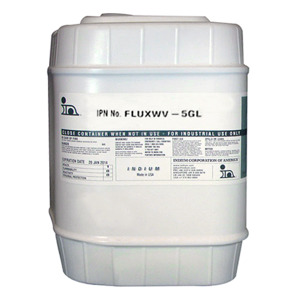
- Description
- Specifications
- Documents
- Halogen-free per J-STD-004B
- No halogens and no rosin
- Light-colored, low-residue, and rosin-free flux and residue for enhanced pin-testing performance
- Tested compatibility with Hot Air Solder Leveled (HASL), Immersion Silver, Electroless Nickel Immersion Gold (ENIG), and Organically Solder Preserved (OSP) Copper surfaces
- Tested for use with all common lead-free and tin-lead alloys
- J-STD-004B Flux Type: ORM0
- Solids content: 4.99
- Flash point: 12 C
- Total halogen: <50ppm
The main advantage of alcohol-based fluxes is that they require less preheat to drive off the solvent prior to entering the wave. This allows assemblers to run smaller wave soldering machines at a higher throughput rate. It also reduces the concern about flux that has not been completely heated inadvertently transferring to the top side of the circuit board.
Fluxes that have high solids content, as well as higher amounts of halogen, tend to be more heat-stable and solder better with a variety of board types, sizes, and thicknesses. Fluxes with lower solids contents and no rosin tend to be easier to electronically probe-test and have less visually apparent residue. Halogen content is not necessarily an indicator of final circuit board reliability since halogen types vary and rosin in the flux will enhance an assembly's surface insulation resistance.
